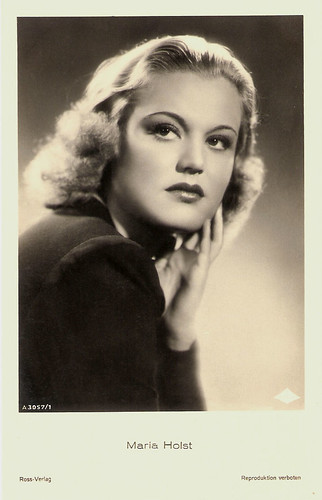
German postcard by Ross Verlag, no. A 3057/1, 1941-1944. Photo: Wien Film.

German postcard by Film-Foto-Verlag, no. A 3500/1, 1941-1944. Photo: Hämmerer.
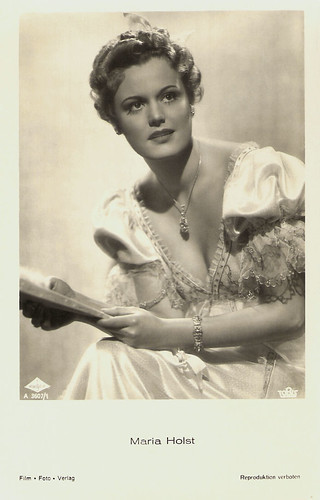
German postcard by Film-Foto-Verlag, no. A 3607/1, 1941-1944. Photo: Wien Film / Tobis.
Important stage actress
Maria Holst was born as Friedel Anna Marie Emilie Czizek in Vienna, Austria-Hungary (now Austria), in 1917. She was the daughter of a Viennese father and a Norwegian mother. Both were active in art circles and Maria followed in their footsteps.
At an early age, she was educated at the Comédie Française (according to Wikipedia she was trained at a theatre school in Prague). She finished her education in Vienna at the Max-Reinhardt-Seminar and debuted in Zürich (according to Wikipedia she made her debut at the Landestheater Linz in 1935).
Maria Holst made her film debut already at the age of 15 in Unsichtbare Gegner/Invisible Opponent (Rudolph Katscher, 1933) with Gerda Maurus and Peter Lorre. When she was 19 she appeared in small roles in the classic Burgtheater/Vienna Burgtheater (Willi Forst, 1936) and in Lumpacivagabundus/Lumpaci the Vagabond (Géza von Bolváry, 1936) with Heinz Rühmann.
Soon she made herself a name as a stage actress and she had engagements in Vienna at the Jozefstadt, the Volkstheater and the Burgtheater (according to Wikipedia she appeared at the Theater an der Wien, in 1937 at the Stadttheater in Brünn, and from 1938 on she was a member of the ensemble of the famous Burgtheater in Vienna). In 1939 she left for Berlin and Munich, returning to the Burgtheater afterwards.
In this period she played such roles as Gloria in George Bernhard Shaw’s 'Man kann nie wissen' (You Never Can Tell) (1939), Elisabeth in Friedrich Schiller’s 'Don Carlos' (1942), Prothoe in Heinrich von Kleist’s 'Penthesilea' (1943) and Portia in William Shakespeare’s 'The Merchant of Venice' (1943).
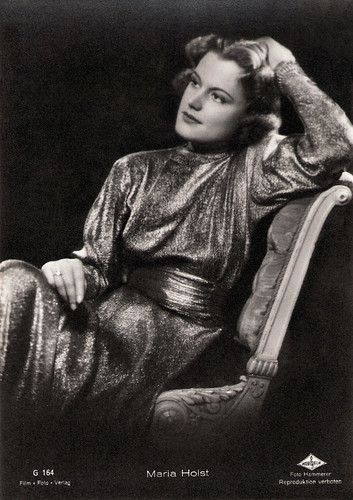
German postcard by Film-Foto-Verlag, no. G 164, 1941-1944. Photo: Hämmerer.
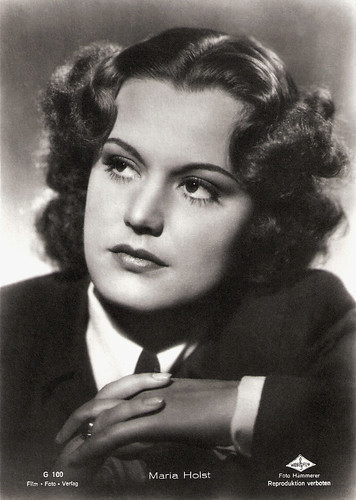
German postcard by Film-Foto-Verlag, no. G 100, 1941-1944. Photo: Hämmerer.
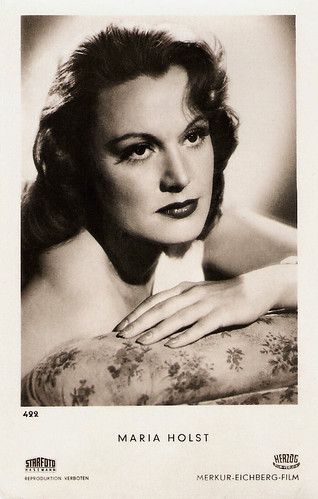
German autograph card, no. 422. Photo: Starfoto Hasemann / Herzog Film-Verleih / Merkur-Eichberg-Film.
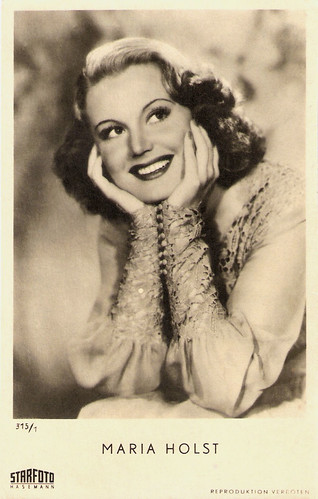
German autograph card by Starfoto Hasemann, no. 315/1.
Huge hit
In 1940, Willi Forst selected Maria Holst for the leading part of singer Marie Geistinger in the successful film Operette/Operetta (Willi Forst, 1940). During the wartime a few more screen appearances followed in the operetta film Wiener Blut/Vienna Blood (Willi Forst, 1942) - another huge hit, Hundstage/Dog Days (Géza von Cziffra, 1944), and Der Gebieterische Ruf/The Commanding call (Gustav Ucicky, 1944) opposite Rudolph Forster.
After the war, she kept her appearances in films rare. She appeared in Märchen vom Glück/Kiss Me Casanova (Arthur De Glahs, 1949) opposite O.W. Fischer, and in Mordprozeß Dr. Jordan/Murder Trial Dr. Jordan (Erich Engels, 1949). She preferred to focus her attention on the theatre and performed on stages in Vienna, Stuttgart, Bad Hersfeld and Berlin.
In the 1950s more films followed including roles in the Heimatfilm Grün ist die Heide/The Heath Is Green (Hans Deppe, 1951), Mein Herz darfst du nicht fragen/You Can’t Ask For My Heart (Paul Martin, 1951), and Rosen aus dem Süden/Roses From the South (Franz Antel, 1954).
She also played the countess in Die Trapp-Familie/The Trapp Family (Wolfgang Liebeneiner, 1956) with Ruth Leuwerik and Hans Holt. One of her last films was Lockvogel der Nacht/Nocturnal Stool Pigeons (Wim ten Haaf, 1959).
In 1980 Maria Holst died tragically in Salzburg, Austria, when she choked on a meal. She was married twice. In 1944 she married the painter and graphic designer Eugen Graf Ledebur. Her second husband was Dr. Rudolf Röttgers, with whom she had a daughter, Elisabeth (1957).
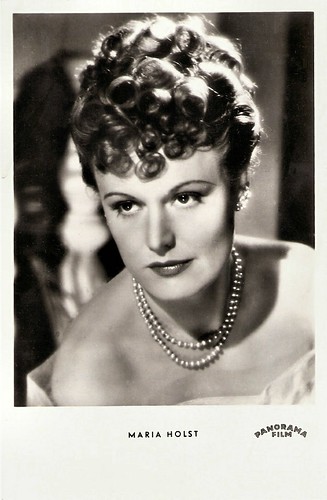
German postcard by Kunst und Bild, no. A 471. Photo: Panorama Film.
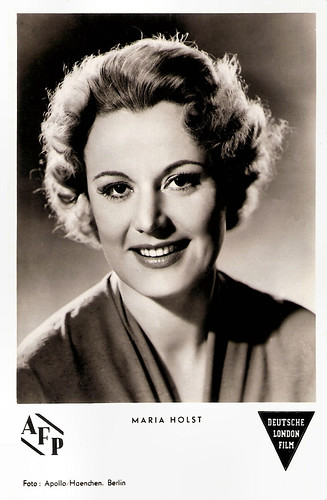
German postcard by Kunst und Bild, no. A 610. Photo: Apollo / AFP/ Deutsch London Film / Haenchen.
German card. Photo: Paula Wessely-Film, Deutsche London, Hämmerer.
German postcard by ISV, no. C 8. Photo: Divina / Gloria / Filipp.
Sources: The Androom Archives, Thomas Staedeli (Cyranos), Stephanie D'heil (Steffi-line - German), Wikipedia (German) and IMDb.
This post was last updated on 16 October 2024.
1 comment:
Great post Bob. She was a real beauty.
Post a Comment